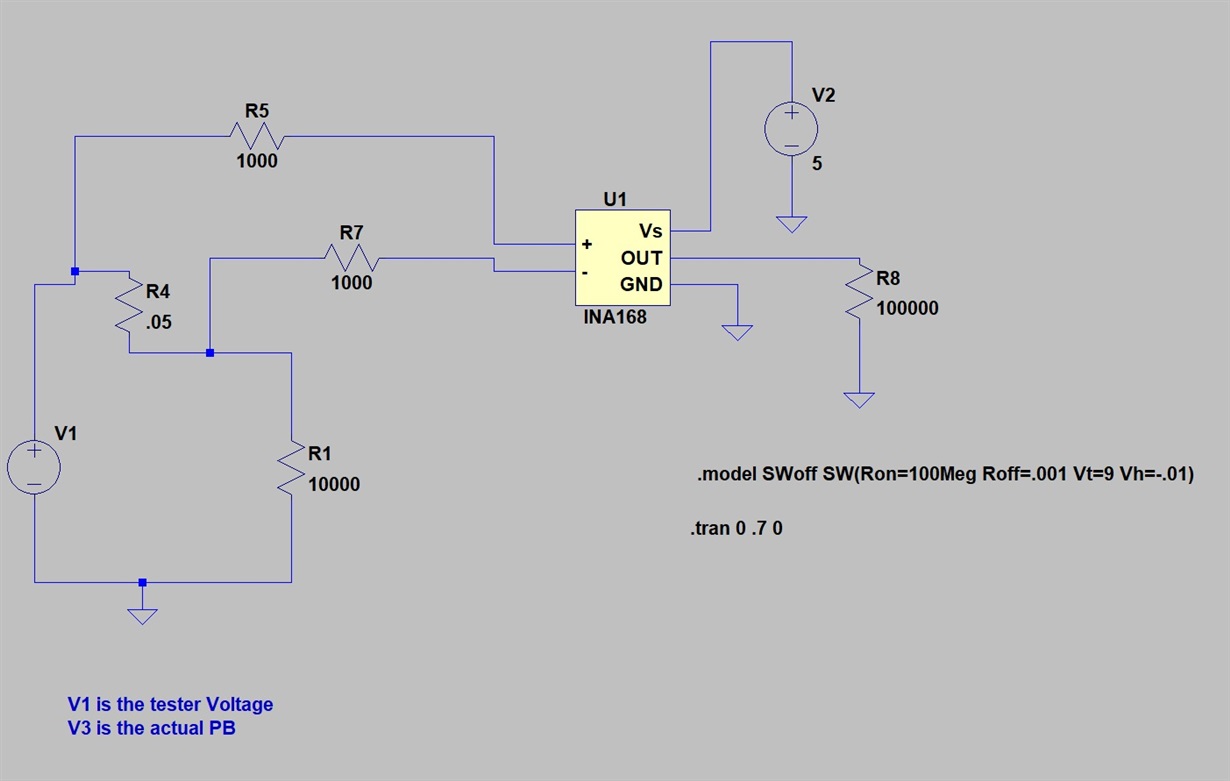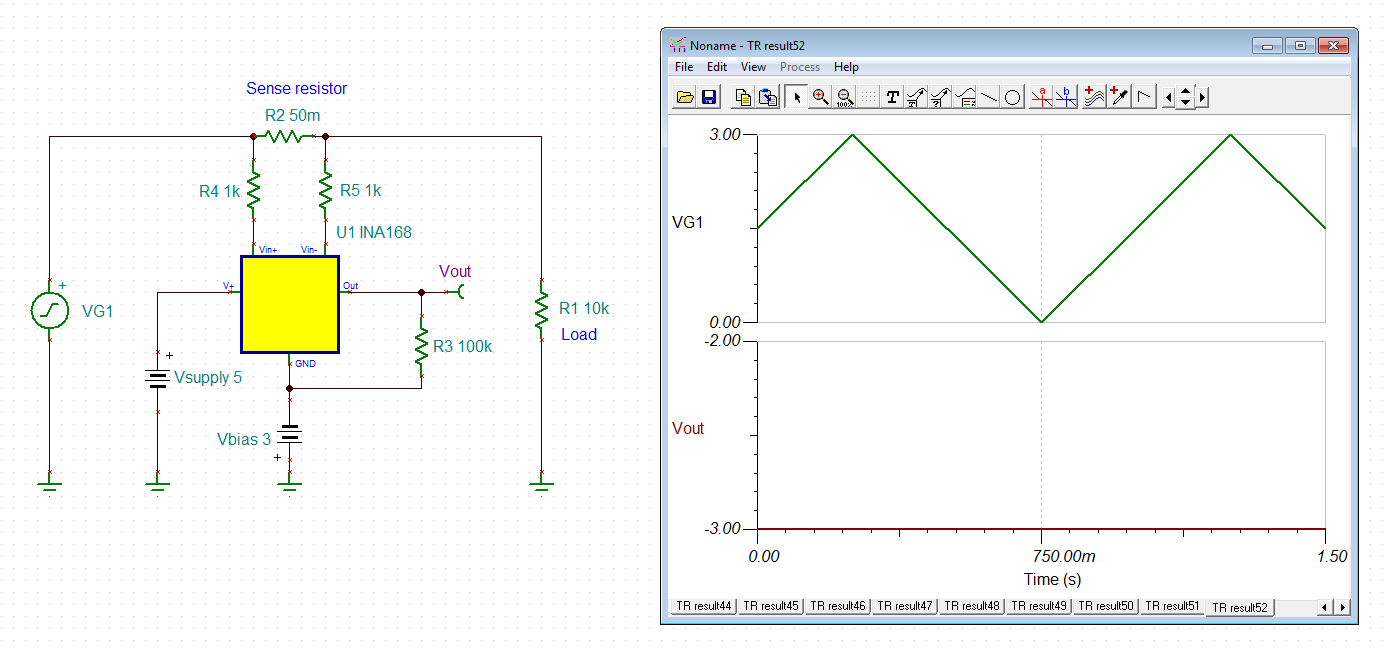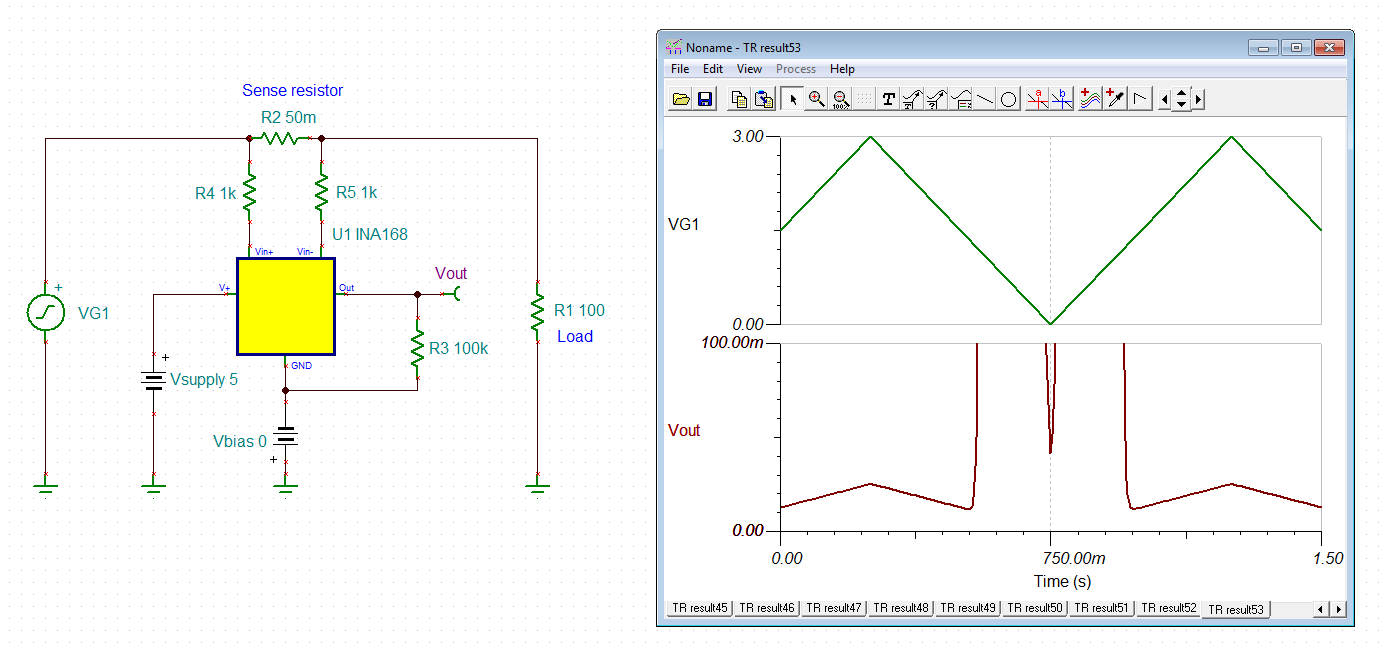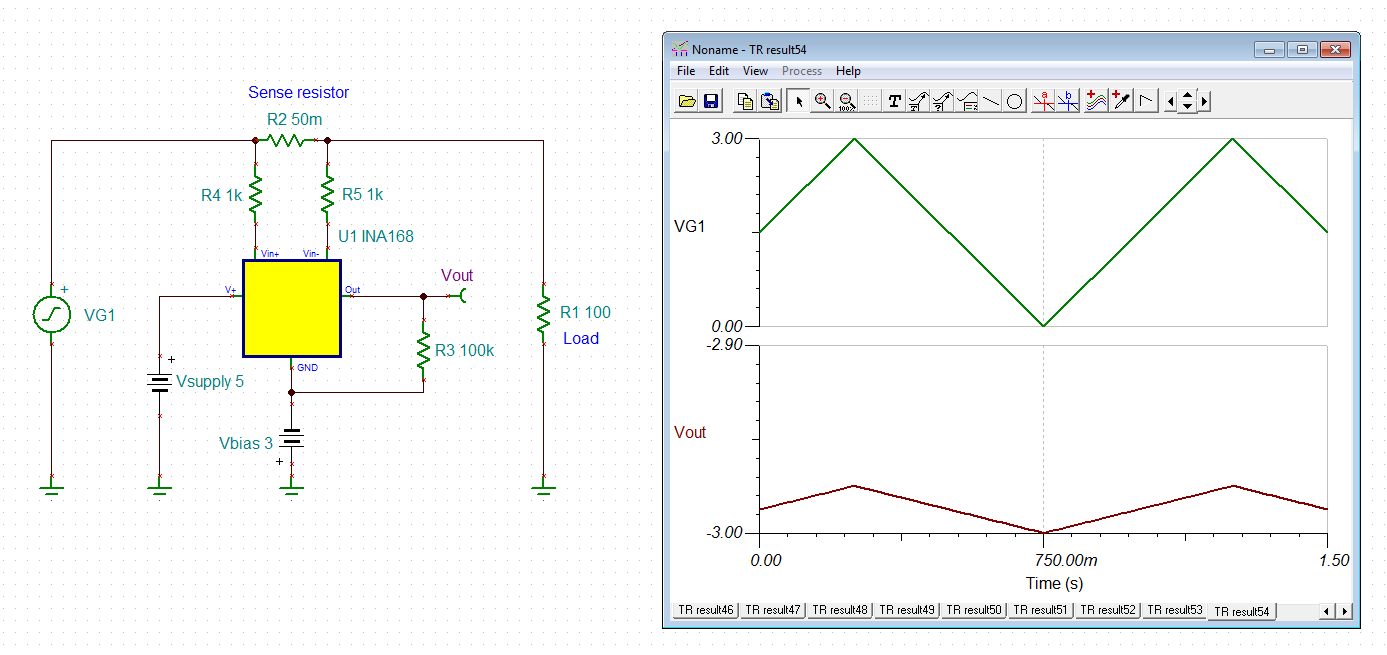Other Parts Discussed in Thread: TINA-TI, INA193
We are using this to monitor the current in a battery system. This is a unique battery that is "triggered" to provide voltage, i.e., it is not on all the time and switched on and off.
We are powering the INA168 from a 5 V supply that is always on, as far as we are concerned here.
So, when our battery starts to ramp up we are seeing a spike on the output voltage. I can't share data from the system, but I can show the SPICE model which does the same thing.
Is this normal? What exactly is happening here? Is there a way to suppress it? Note that it happens even if the current sense and 1K isolation resistors are removed.
In the voltage plot, the "battery" voltage is blue and the output of the INA168 is green.







